Digital Camera World Verdict
Rock solid in feel and chunkily constructed, the Sony RX10 III packs a lot in, though it’s chiefly the headline features of a one-inch sensor combined with generous 25x optical zoom that anyone will be considering purchasing this one for. These specifications however also mean the camera is weighty and that it feels ‘DSLR like’ (or DSLR-lite) in the hand. Ultimately though it’s images we’ll be buying this camera for and here the Mark III packs in plenty of detail and a richness of colour, with, if we’re being picky, just a slight fall-off in sharpness towards the very corners of the frame at maximum wideangle setting which is fairly standard for a jack-of-all-trades offering.
Pros
- +
Robust and feature packed
- +
Built-in power zoom
- +
Larger than average one-inch sensor size
Cons
- -
Updated Sony RX10 IV is often better value
- -
Weighty and bulky
- -
Sluggish zoom action
- -
One-inch sensor is still smaller than APS-C or full frame
Why you can trust Digital Camera World
Since it first launched for enthusiast photographers back in 2013, Sony has been incrementally updating its popular premium feel RX10 super zoom or ‘bridge’ camera, with the third generation RX10 III model being the one we’re looking at here.
At the time of writing there is currently also a fourth generation Sony RX10 IV available, which came out in 2017 (see our full review). On top of this, at the time of writing there has long been anticipation and rumor surrounding a thus-far-unreleased RX10 V camera, which could have been delayed by the pandemic and chip shortage, or the manufacturer may just have since shifted its focus; no pun intended.
So let’s talk about what we do know for now. Like its predecessors, the Sony RX10 III features a one-inch sensor, meaning it boasts a physically larger surface area than the 1/2.3-inch chip found in most compact cameras. Yet that’s still smaller than the APS-C and full frame sensors found in the DSLRs and mirrorless cameras the RX10 III most outwardly resembles.
Still, this should mean we’re getting more detail than the average point and shoot, even if picture quality may fall short of an actual DSLR or mirrorless camera. That’s the theory anyway – but how does the camera fare in practice?
Specifications
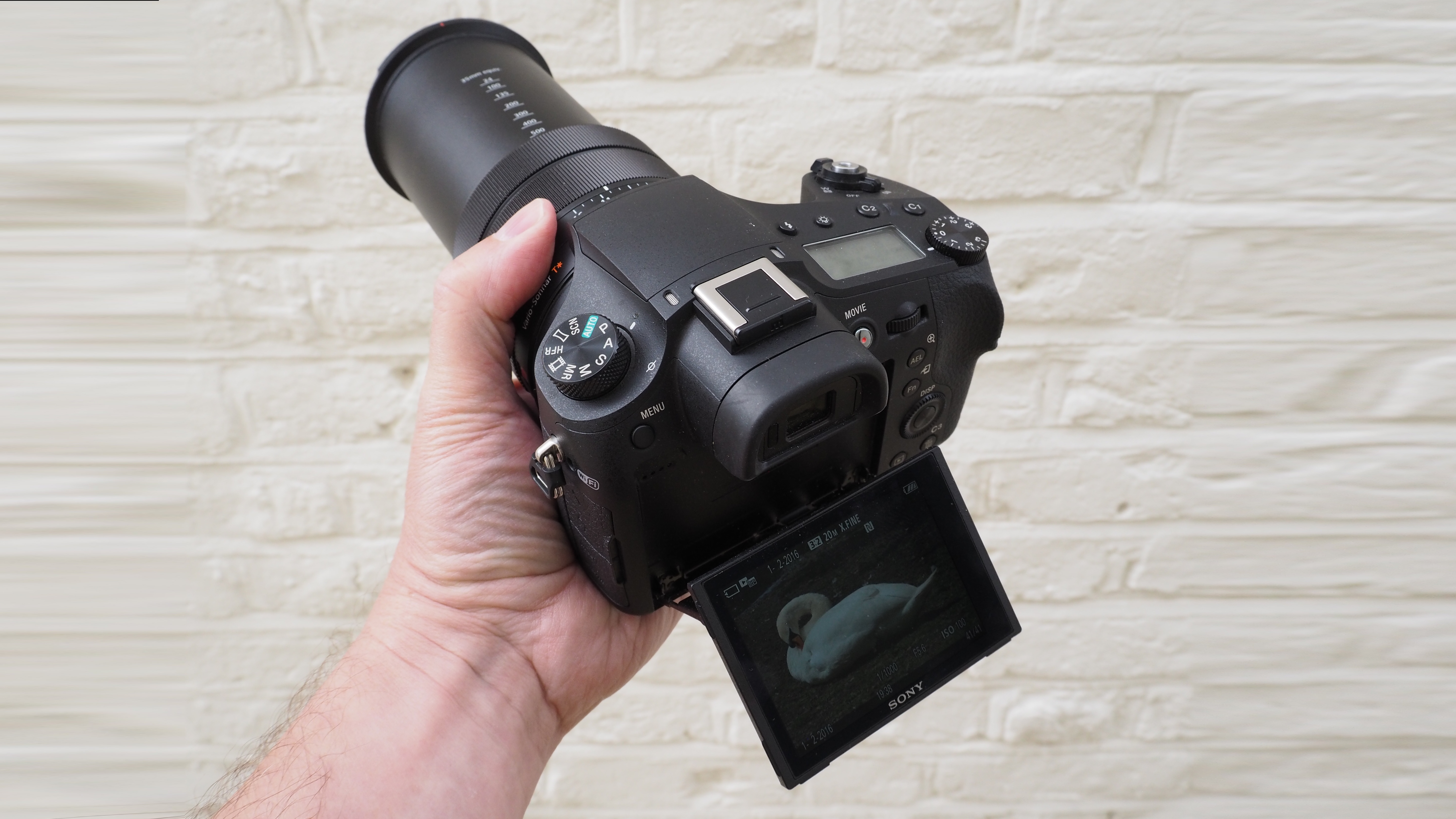
Sony part number: DSC-RX10M3
Sensor: 20.1 effective megapixels 1-inch Exmor RS CMOS
Sensitivity range: ISO100 to ISO12800
Video: 4K maximum resolution at 30fps, or Full HD video at 120fps
Lens: 24-600mm equivalent in 35mm terms, f/2.4-4
Monitor: 2.95-inch, adjustable 1,228,800-dot resolution LCD
Viewfinder: Yes, 0.39-inches and 2,359,296 dots
Battery life: Up to 420 stills, or 130 minutes of video
Dimensions: 132.5x94x145mm
Weight: 1095g with memory card and battery
Key features
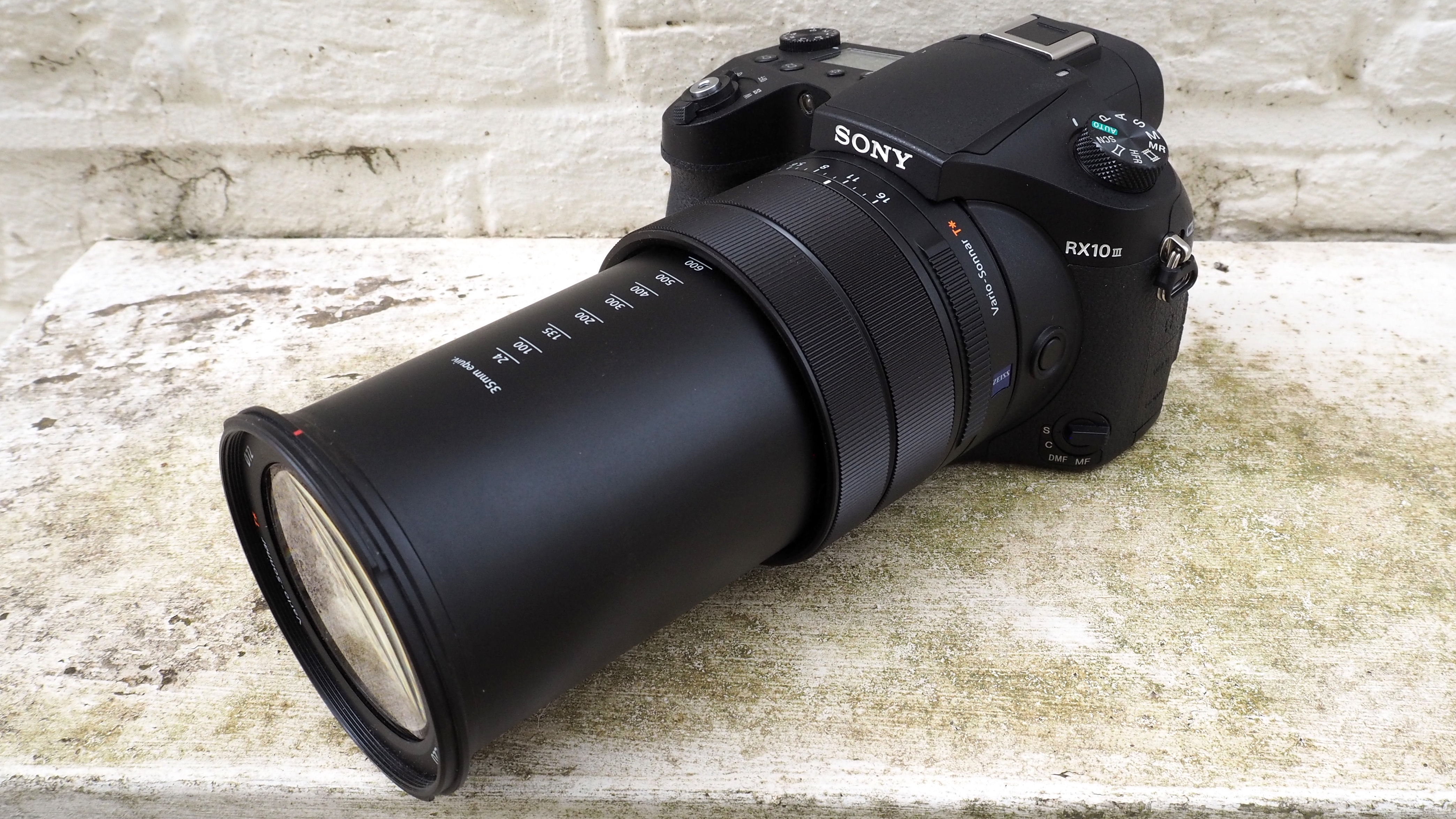
Heft the Sony RX10 III out of its box and it’s fair to admit this one is a bit of a beast. With a body not much smaller than a consumer level DSLR, in its favour the Mark III at least manages to justify it bulk by bolting on a manually adjustable zoom lens with an equivalent focal range of 24-600mm in 35mm terms. This also means that the camera weighs over a kilogram in use, with battery and memory card inserted.
As detailed in our intro, this feature is twinned with a larger than average one-inch Exmor RS sensor, though that’s still smaller in terms of physical dimensions than the APS-C chip found in the average DSLR or mirrorless, so users are really going to feel they need the broad reach and possibilities for shooting an equally broad range of subjects the provided lens delivers here.
Essentially we’re paying for the possibility of a very capable all-in-one capture device, that won’t require extra lenses and accessories to get great results. Additional features worth mentioning include an at-the-time up-to-date Bionz X processor and up to 4K-resolution video capture, along with its core 20.1 megapixel effective resolution. Up to 14fps capture speed is also offered here, whereas the newer, step up model in the RX10 Mark IV, increases this to 24fps. On the RX10 III the core light sensitivity range is ISO100 to 12800, which is expandable to ISO64/80 equivalent. In short this one looks like a capable jack-of-all-trades that is also master of a significant number.
Versus
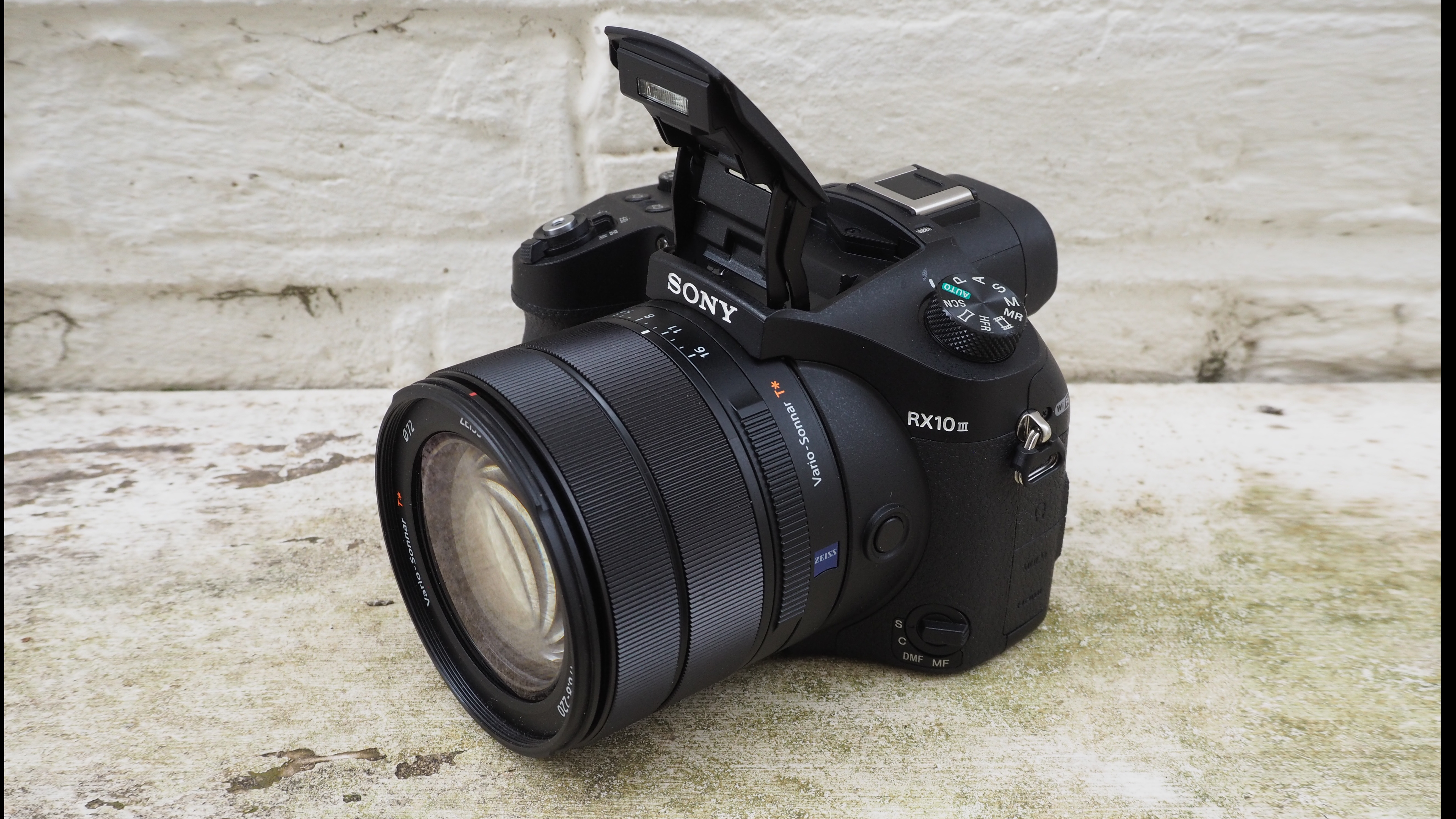
Oddly the closest competitors for the Sony RX10 III are its own brand’s two predecessors and its Mark IV successor, which were all simultaneously still on sale at one point.
• Sony RX10 vs Sony RX10 II vs Sony RX10 III vs Sony RX10 IV
The Mark III’s lens reach is bigger than the two prior RX10 models to this one – up from an 8.3x optical zoom to a generous 25x – which looks great on paper, but in practical terms has meant an increase in RX10 III’s weight and bulk.
Helpfully we also had the subsequent generation Sony RX10 IV bridge camera to hand to look at alongside this one, which again sticks with the 25x optical zoom introduced on the Mark III and in terms of size, shape and control layout is identical.
The electronics giant appears to have therefore stuck with its ‘if it ain’t broke, don’t fix it’ approach – at least externally. One of the under-the-bonnet tweaks on the Mark IV is that focusing speed is claimed to be twice as fast as on its third iteration, due to the implementation of on-sensor phase detection autofocus, though we have to say in practice any day-to-day difference in speed between the models appeared minimal. For the record, on paper the Mark IV can focus as swiftly as 0.03 seconds and offers a continuous burst shooting speed of up to 24fps, which may give it the edge over the RX10 III we’re looking at here for sports and action photography.
Handling
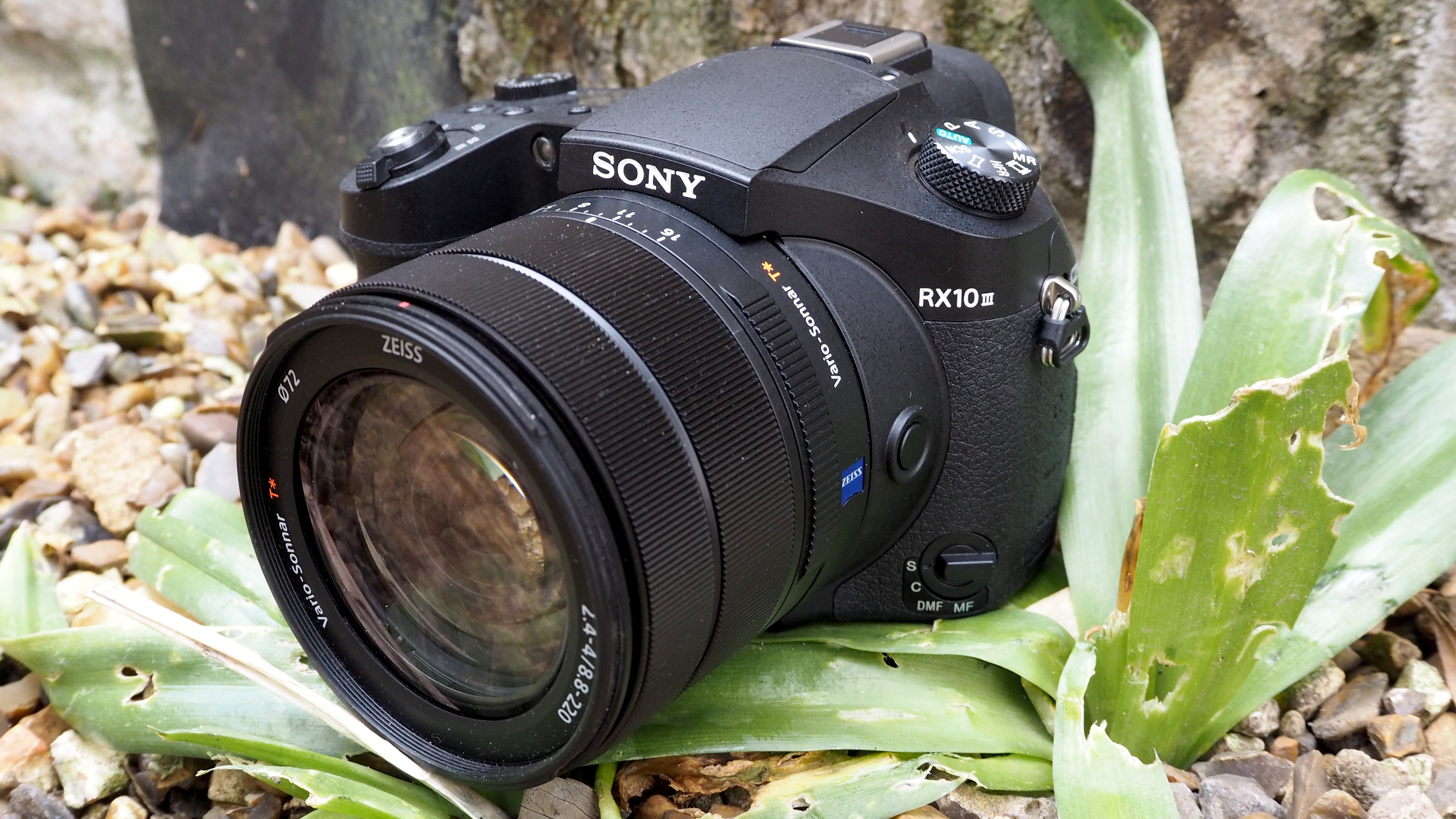
The Sony RX10 III features a robust construction, and, yes, an identifiable ‘premium feel’ when gripped. With a large enough handgrip to squeeze four fingers around while the thumb hovers over a command wheel and thumb rest at the back, this camera’s a solid weight when gripped in the palm. Luckily a neck/shoulder strap is provided out of the box, which makes its 1Kg+ weight more comfortable to carry.
A physically larger camera also means we get plenty of ‘real estate’ to play with here, including the familiarity of a raised and ridged shooting mode dial on one side of the top plate, and an exposure compensation dial of between -/+ 3EV over at the other side, meaning we can make image-affecting adjustments on the fly. Other buttons on the top plate and rear plate, including one for activating the pop-up flash which is hidden from view when not in use, are unusually tiny by comparison and feel like a bit of a hang over from Sony’s compact camera ranges. Adequate though they are it, certainly feels like there was room here to have made them slightly larger.
We are additionally gifted the compositional advantage of both an eye-level electronic viewfinder with a true-to-life viewing quality, plus a flip out and angle adjustable LCD screen at the rear. The versatility here however does not to stretch to it being flipped out through 180° and swiveled around to face whatever is in front of the camera. It’s a case of pull the screen out and angle it up or down by around 107° and 42° respectively – meaning it’s useful for aiding low or high angle shots, if a bit limited otherwise. It’s also worth pointing out that the screen on the Mark III is not touch sensitive, so we’re not able to do the touch focus thing of biasing certain subjects in the frame. This was, however, introduced on the Mark IV model.
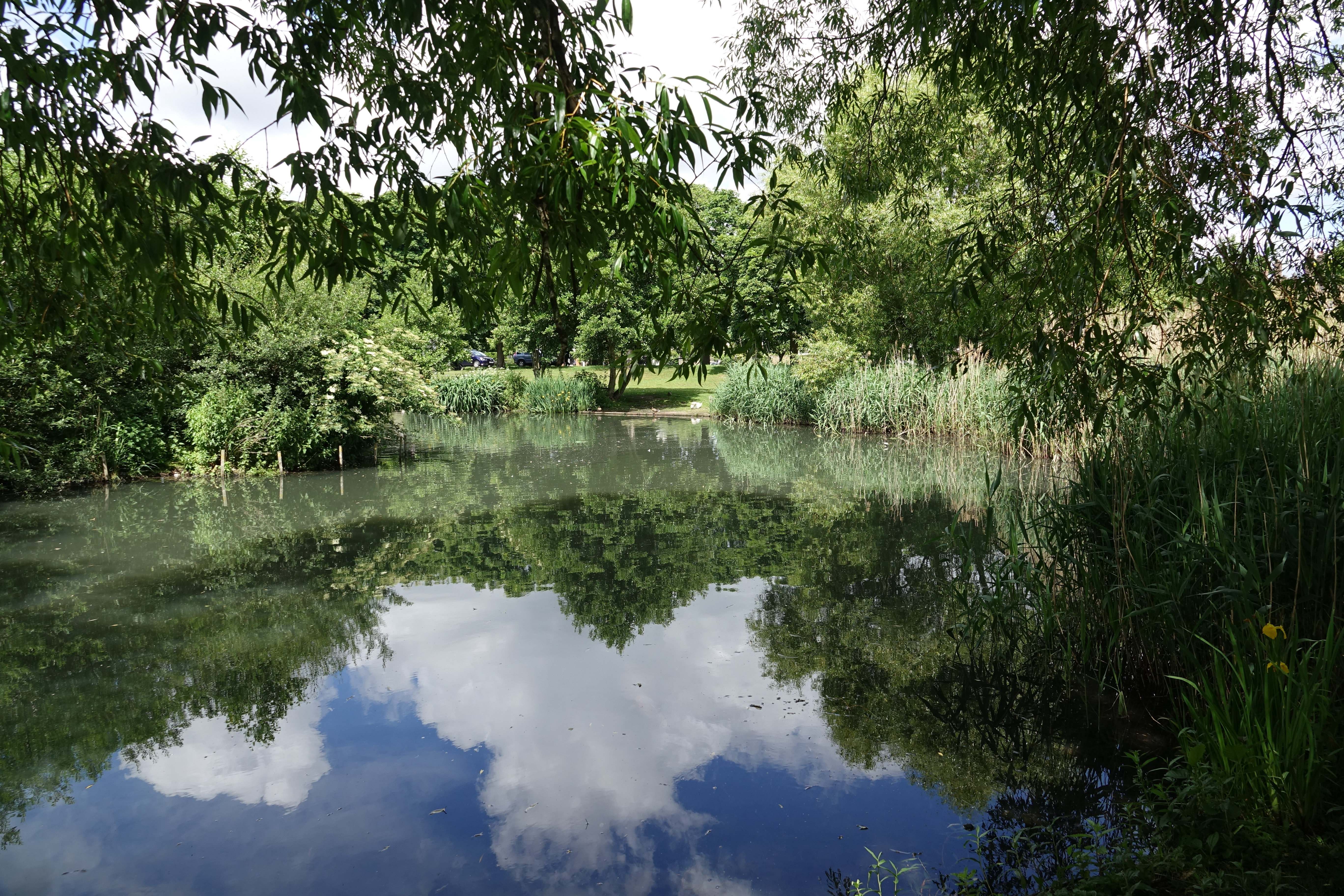

As noted, chief among the Sony RX10 III’s features and the one which we’ll most be considering buying it for is naturally the whopping 25x optical zoom lens bolted on the front which offers a variable aperture range from f/2.4 to f/4, starting out at a wide angle 24mm equivalent and going up to 600mm at the telephoto end. The lens’ movement can either be controlled via a nudge of the spring-loaded lever surrounding the main on/off button on the top plate, as we’d expect, or, alternatively via a zoom ring on the lens itself which provides more of that manual hands-on feel we’d expect for the price and attendant feature set. The lens is a little sluggish to respond, in gingerly moving through its zoom range, so this is perhaps one for more considered image making and framing, rather than adopting a ‘gun-and-run’ approach.
Performance
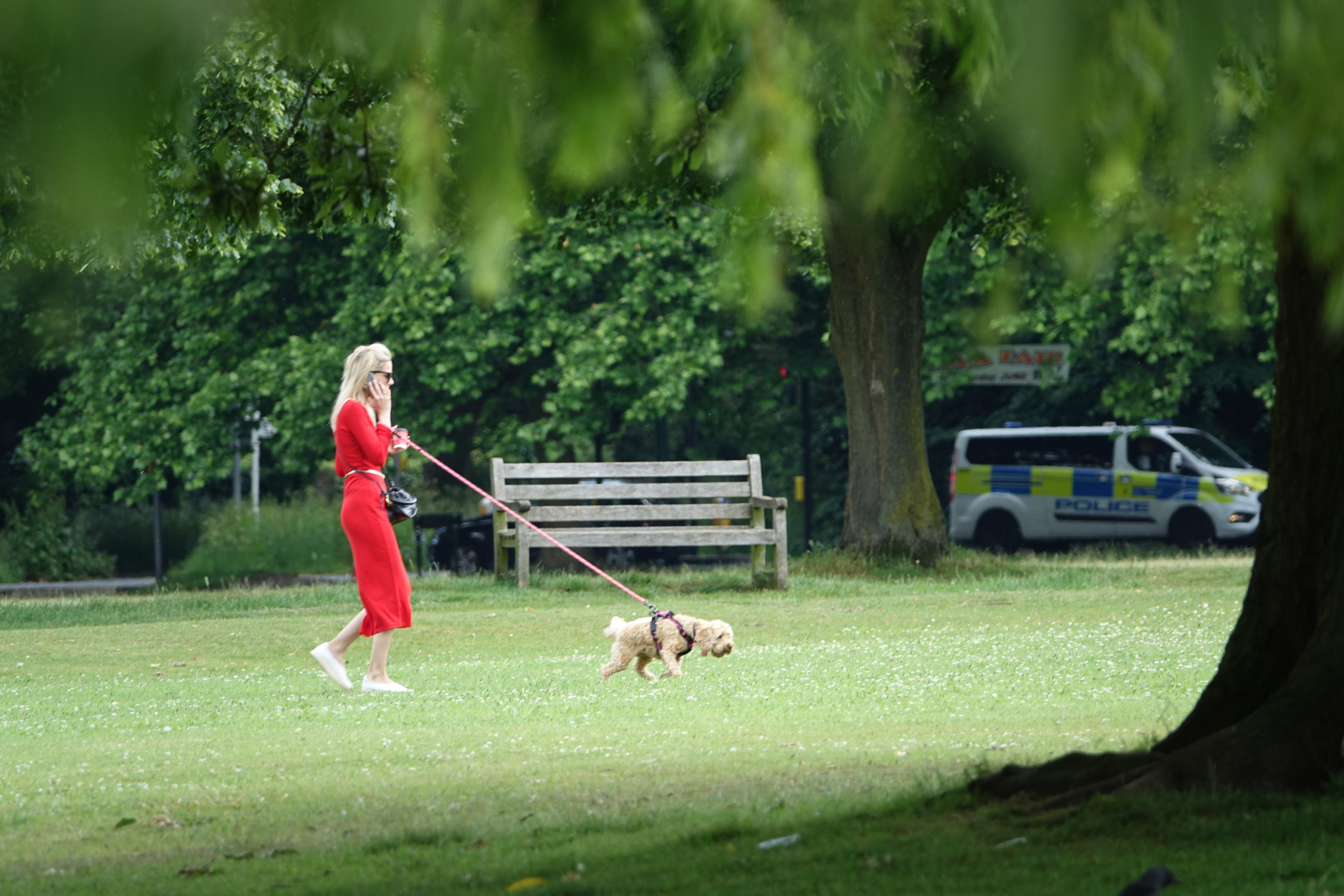


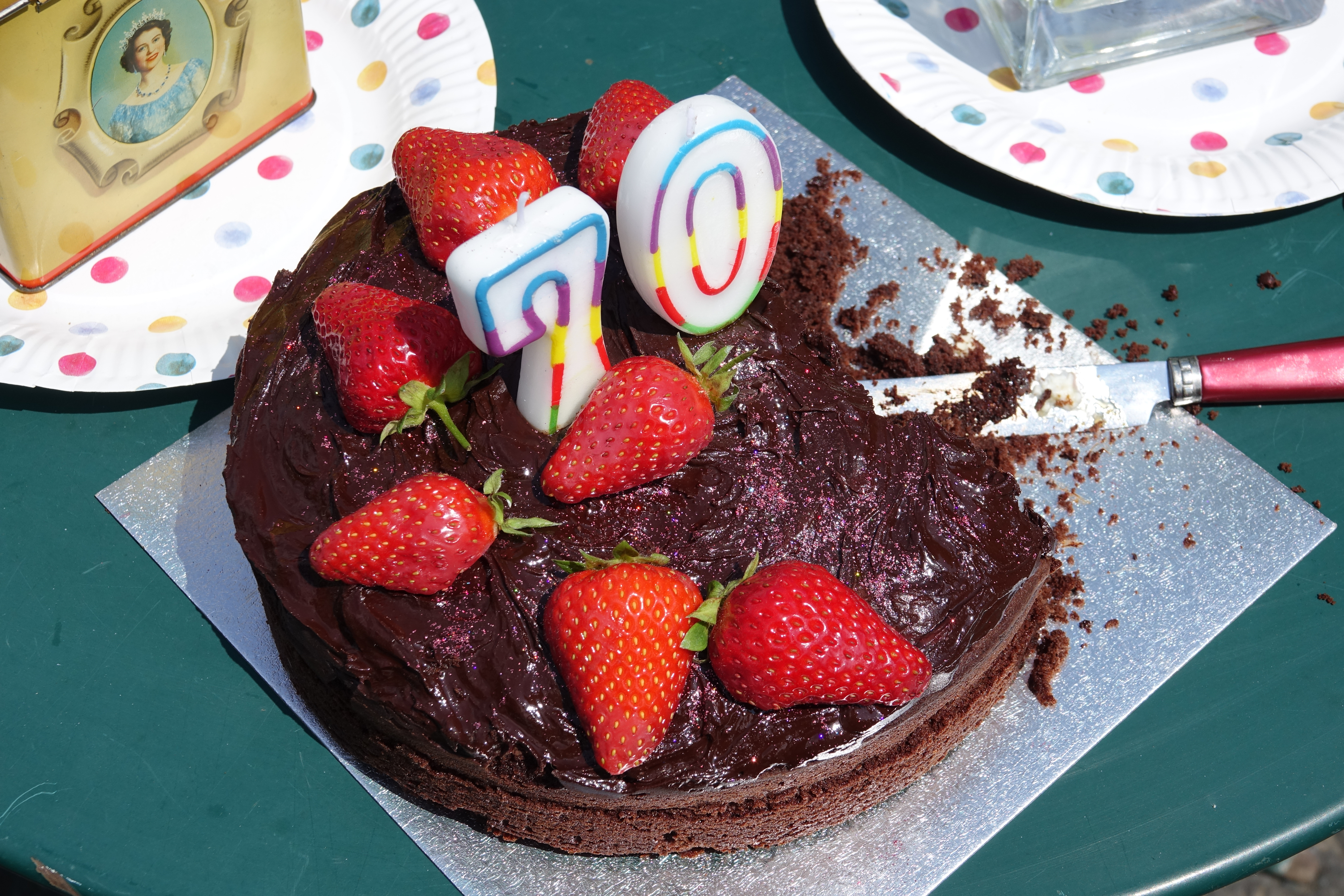
The same Exmor RS sensor packed into the previous generation RX10 II resurfaces in this third iteration, providing an effective maximum resolution of 20.1 million pixels, which has been standard specification for consumer level Sony cameras for a long while. To achieve maximum resolution the camera needs to be set to its default 3:2 image aspect ratio, again long a standard Sony feature, though an option to shoot in more conventional 4:3 is also provided.
While the camera is capable of delivering plenty of detail, we did notice some softness at the very edges of frame under close inspection when shooting maximum wideangle and when shooting handheld it’s worth taking two of three shots of the same subject at maximum telephoto setting to ensure one’s a ‘keeper’. That said, the dead weight and bulk of the camera at least proves a positive in such circumstances, enabling the user to hold it fairly steady in both hands and mimimise any possibility of camera shake leading to unwanted softness of image. In short there aren’t many pronounced negatives to this model.
Though utilizing the same rechargeable battery as the previous generation RX10, performance has been boosted to the tune of being able to squeeze 20 more shots out of a full charged cell, to bring the total to 420 images. While not quite a match for the battery performance of the typical DSLR this camera resembles, it’s decent when compared to entry-level mirrorless models or indeed digital compacts.
Verdict
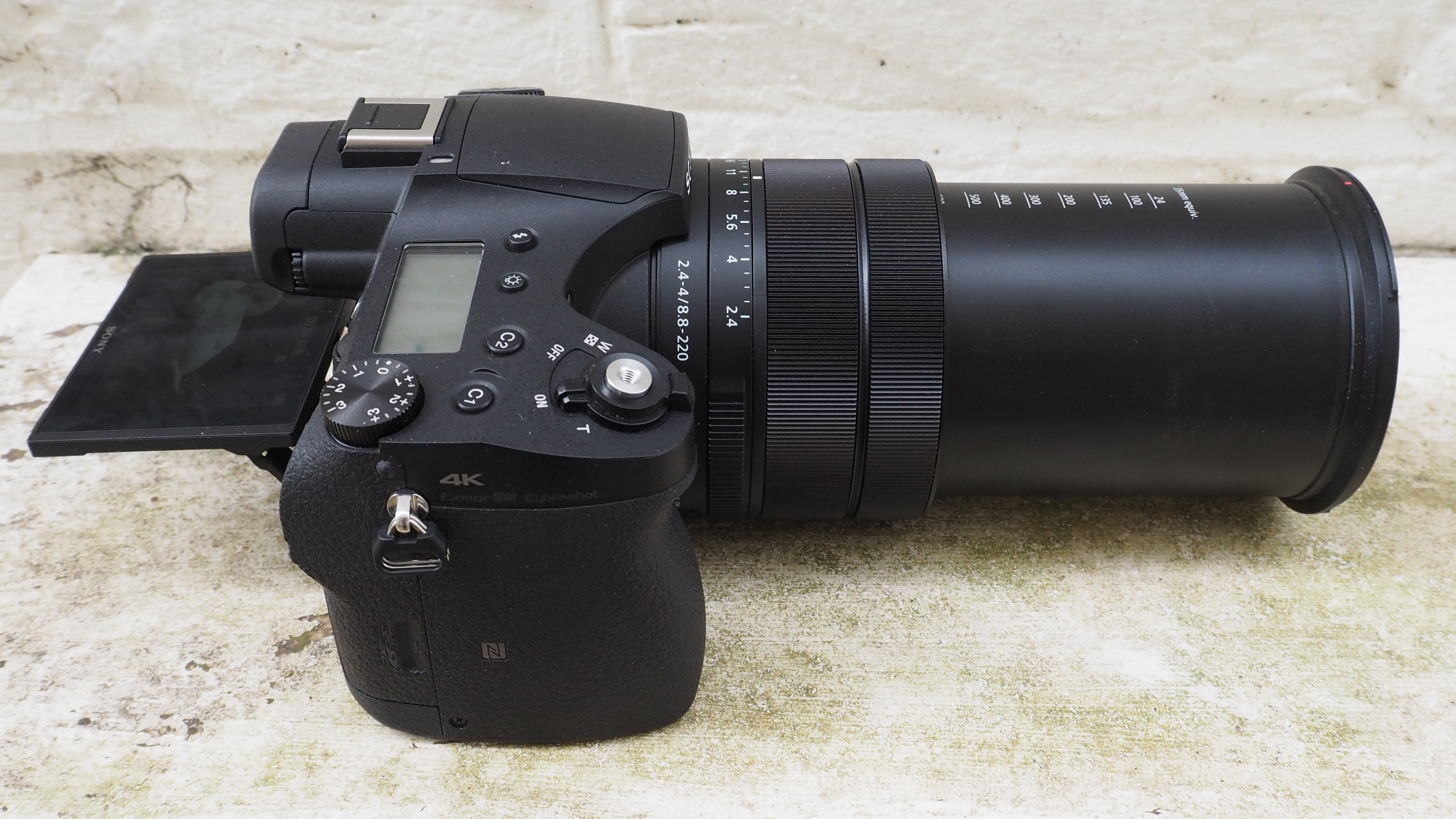
A whopping zoom lens on a body with a DSLR-like form and control layout that incorporates a one inch sensor providing 20 megapixel images is what we’re getting here – and a keen amateur photographer wanting good results but not the added bulk and expense of buying additional lenses for an actual DSLR may find the RX10 III has much to recommend it. If the feature set and specification here appeals but action, sports and wildlife photography from afar is what you’re considering this camera for, it will also be worth taking a look at pricing for the newer RX10 Mark IV iteration, which is outwardly identical but has had a few performance enhancing tweaks made. It is also worth checking the prices on both RX10 models, because you may find a better deal on the newer Mark IV camera.
Read more
Best Sony cameras
Best compact cameras
Best bridge cameras
Best waterproof cameras
Best point and shoot cameras
Gavin has over 30 years’ experience of writing about photography and television. He is currently the editor of British Photographic Industry News, and previously served as editor of Which Digital Camera and deputy editor of Total Digital Photography.
He has also written for a wide range of publications including T3, BBC Focus, Empire, NME, Radio Times, MacWorld, Computer Active, What Digital Camera and the Rough Guide books.
With his wealth of knowledge, Gavin is well placed to recognize great camera deals and recommend the best products in Digital Camera World’s buying guides. He also writes on a number of specialist subjects including binoculars and monoculars, spotting scopes, microscopes, trail cameras, action cameras, body cameras, filters and cameras straps.


